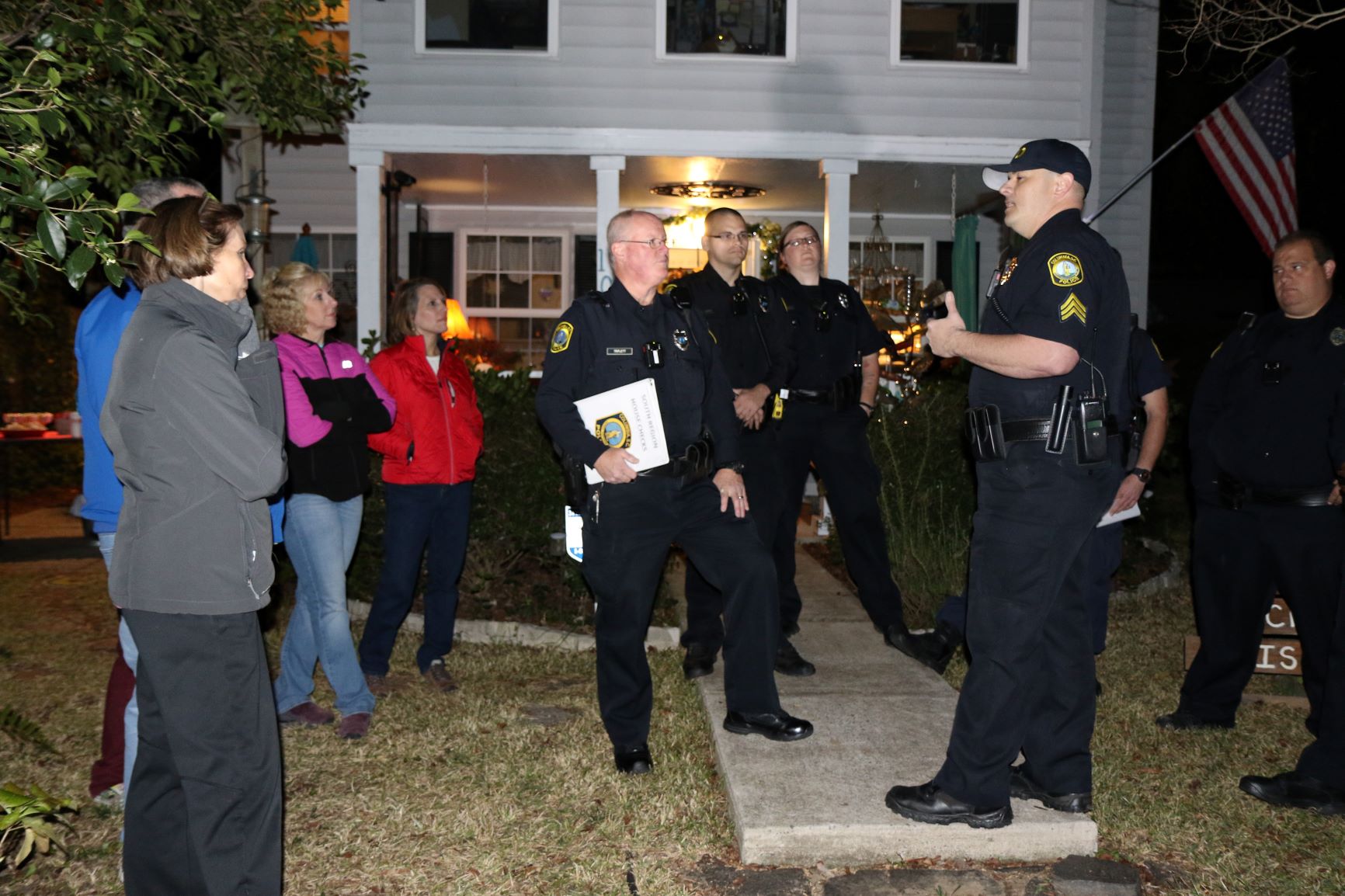Speaking on a panel about building community trust at the Municipal Association’s Annual Meeting, City of Columbia Police Chief Skip Holbrook began with a reminder of the strained relationships faced by police and residents in recent years.

At the Columbia Police Department's Front Porch Roll Calls, officers can answer questions about community concerns. Photo: City of Columbia.
The police shooting of Michael Brown led to protests in Ferguson, Missouri in 2014. Months later, the shooting of Tamir Rice by an officer in Cleveland, Ohio had a similar impact. Each of these incidents eroded trust in law enforcement and required measures be adopted to restore that trust. As a start, many agencies adopted the usage of body cameras as a standard practice around that time, with the Columbia Police Department making the change in spring 2015.
“Really, we haven’t looked back since, it was a great decision that we made,” Holbrook said. “I think it’s been a part of the transformation of our department. Our rank and file were very accepting of the body cameras, and it’s proven time and time again to been an important tool that we have.”
Holbrook outlined other efforts made by Columbia police to enhance trust, transparency and accountability in recent years, including the revision of internal affairs processes, the creation of a citizen advisory council and a command review board, as well as the publication of public internal affairs documents.
Crime reduction strategies, Holbrook said, have become “intelligence-led.” Because responding to high-crime areas with a high police presence can hinder public relations without necessarily improving outcomes, the Ceasefire Columbia program takes a different approach. This program brings together “prolific offenders” for forums with law enforcement and also connects these offenders with service providers to offer assistance. The department is also now using acoustic sensors to detect gunshots around the city, enabling officers to respond quickly and reduce the possibility for gunfire to go unreported. A tactical first aid program has put lifesaving equipment into every cruiser and provided training for officers.

At the Columbia Police Department's Front Porch Roll Calls, officers can answer questions about community concerns. Photo: City of Columbia.
“We’ve had lifesaving, heroic actions by our police officers on numerous occasions since we put that very simple program in place,” Holbrook said.
Columbia Deputy Chief Melron Kelly highlighted other community outreach programs happening in the city. Beginning-of-shift roll calls taking place on residents’ porches, a community service program for newly sworn officers and the Young Ambassadors for Justice Student Roundtable, giving students an opportunity to share their thoughts and feelings on law enforcement, are just a few of the outreach programs.
“I do believe that our officers learned just as much from those young people as they did from us — everything from the latest dance moves to fashion to just how to better connect with them,” Kelly said.
The Columbia Police Department is one of the partners of the nonprofit organization Serve & Connect, which fosters partnerships between police and their communities. Speaking as part of the panel, the group’s founder, Kassy Alia Ray, said opportunities to bring people together and create improvements can exist in places where distrust is strong, either because of high crime or because the population has been historically marginalized.
She expressed gratitude for the Columbia department being the first to join Greg’s Groceries, an organization which provides boxes of nonperishable food for police to hand out to those in need. Columbia has also worked with Serve & Connect on the North Columbia Youth Empowerment Initiative, which aims to build partnerships in a targeted ZIP code.
The City of Columbia, Alia Ray said, is “really demonstrating that it’s not an either/or, that if we care about promoting safety in our community, we have to care for the people. We have to lead with love. We have to be looking for the drivers and the undercurrents, the factors which really drive crime in the first place.”
